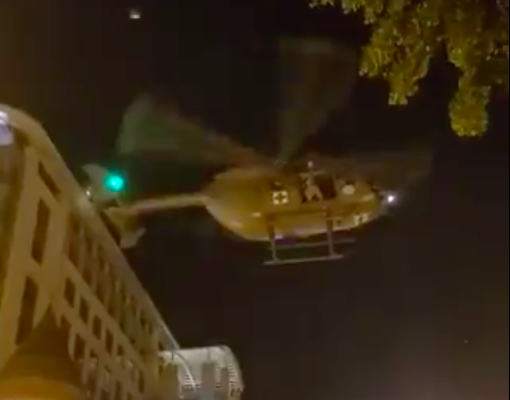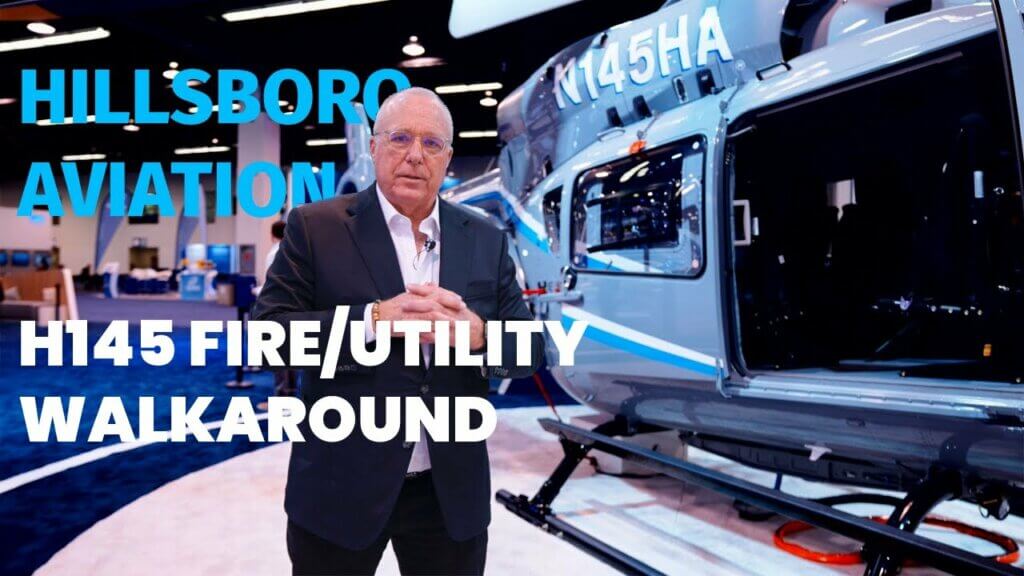The commander of the Washington, D.C., National Guard has called for an immediate investigation into the June 1 low-flying maneuvers by at least two military helicopters in the city to ensure those involved complied with applicable procedures and safety regulations.
As protests in the U.S. capital continued past a 7 p.m. curfew on June 1, U.S. Army National Guard helicopters in at least two separate incidents hovered at or below roof level to disperse crowds using their noise and rotor wash.
“I hold all members of the District of Columbia National Guard to the highest of standards. We live and work in the District, and we are dedicated to the service of our nation,” said Maj. Gen. William J. Walker, DCNG commanding general, in a statement published June 3. “I have directed an immediate investigation into the June 1 incident.”
Secretary of Defense Mark Esper on June 3 told reporters that he spoke to Army Secretary Ryan McCarthy about the incidents and had ordered an inquiry into whether the helicopters were used to intimidate protesters and who had ordered the tactic. He would not comment on the appropriateness of hovering low over crowds.
“I’m not going to comment, because I’ve asked that an inquiry be made,” Esper said during a brief press conference from the Pentagon. “I want to make sure I understand why, what happened, who was involved, what orders were they given or not given? Was there a safety issue involved with aircraft hovering that low?”
For a third day June 1, protests simmered around the White House and elsewhere in the city in response to the recent death of George Floyd at the hands of Minneapolis police. A largely peaceful protest in Lafayette Square in Washington was forcibly dispersed by mounted police and riot officers on foot prior to a 7 p.m. curfew.
As the larger protest broke into smaller groups and dispersed through the city, some were overflown and followed by military helicopters, according to reports. To residents unused to seeing and hearing helicopters up close, witnessing them hovering just above the street was alarming.
“It was the frequency of the sound that was the most jarring,” Matt Castleman, a Washington, D.C. resident, told Vertical. “It felt near constant at some points of the night. Sometimes loud enough that at first we thought it was a truck outside until we recognized it as a helicopter.”
Videos posted to social media by reporters and protesters in Washington show a D.C. National Guard UH-72 Lakota helicopter hovering at about 100 feet above a crowd of protesters. The utility helicopter is marked with red crosses painted on white squares that identify it as a non-combatant medevac aircraft.
UH-72 Lakota – GUARD COPTER 72212 dusting people over Washington DC. While this helicopter has 2 engines, it might not have enough power to safely fly away if an engine fails pic.twitter.com/OA3uSrKSR9
— Thenewarea51 (@thenewarea51) June 2, 2020
As part of the investigation, the DCNG is looking into the use of a UH-72 medical evacuation helicopter as part of the Joint Task Force DC operation. Esper said the Defense Department has received conflicting reports about what the helicopters mission was.
“I got a report back that they were asked by law enforcement to look at a … National Guard checkpoint to see if there were protesters around,” he added. “There’s conflicting reports and I don’t want to add to that. I think we need to let the Army conduct its inquiry and get back and see what the facts actually are. … I think, when you’re landing that low in a city, it’s looks unsafe to me, right? But I need to … learn more about what’s going on. It would not be unsafe if it were a medevac bird picking up somebody who was seriously injured or something like that. It would be a different circumstance. We have to find out all the facts, take it all in and let the Army do its work.”
He clarified that “to my mind, it wasn’t” a medevac mission.
Unlike many U.S. cities, D.C. has a strict height restriction on buildings that limits them to 90 feet (27 meters) for residential and 110 feet (34 m) for businesses. Reports indicate at least one of the low-hovering Lakota incident occurred in the Chinatown neighborhood, which features some of the taller buildings in the city.
In another video captured by New York Times reporter Zolan Kanno-Youngs, a UH-60 Black Hawk is clearly identifiable hovering somewhat higher elsewhere in the U.S. Capital.
About 10 minutes later, here it goes again. pic.twitter.com/3yoxOAu0uw
— Zolan Kanno-Youngs (@KannoYoungs) June 2, 2020
The Airbus-built UH-72 is a twin-engine National Guard utility helicopter primarily used for domestic missions including search and rescue operations, reconnaissance and surveillance, and medical evacuation (medevac). The Lakota is also often used for VIP transport of general officers, political officials and others. Video also emerged of Chairman of the Joint Chiefs of Staff Gen. Mark Milley walking the streets of D.C. in fatigues and some veterans have pointed out that it is possible Milley or some other VIP could have been aboard the hovering aircraft to observe the situation on the ground.
The Black Hawk is a much larger twin-engine helicopter built by Sikorsky, now a division of Lockheed Martin. It is perhaps the most ubiquitous U.S. military helicopter used for everything from combat search and rescue to tactical assault to anti-submarine warfare.
In New York, an NYPD Bell 429 helicopter was filmed filmed flying low over a Bedford Avenue crowded with protesters.
NYPD helicopter dips down low above the crowds. pic.twitter.com/ie4gYqMEv4
— Vincent Barone (@vinbarone) May 30, 2020
The D.C. National Guard operates under a different status than state guard units. Unlike state guard units that are under the direct control of the various governors, the D.C. Guard is perpetually under federal control, and thus under direct control of the Commander in Chief, President Donald Trump.
“At the direction of the President, District of Columbia National Guard personnel were activated in support of civil authorities in order to protect the lives and property of our fellow citizens,” the D.C. National Guard said in a statement.
Dan Schwarzbach, executive director and chief executive of the Airborne Public Safety Association, said the tactic of flying low to disperse crowds with rotor wash and noise was not common but has been used sparingly by airborne law enforcement units in the past. He cited a September 2018 incident in which a Pennsylvania State Police helicopter, along with about 20 troopers on foot and six mounted officers attempted to break up a rowdy tailgate before the Ohio State-Penn State football game.
Still, the tactic is so rarely used that there is no formal or common term for it in law enforcement, Schwarzbach said.
“It is not trained or practiced by any state or local law enforcement agency of which I’m aware,” he told Vertical in an email. “It is more doing what it takes to get the job done with the tools available to us at the time.”
In combat zones, the tactic is called a “show of force” and is meant to intimidate and scatter crowds gathering and threatening U.S. and allied troops. The same tactic is performed by low-flying military jets in war zones.
Washington, D.C., is no stranger to helicopter activity. The Joint Force Headquarters National Capital Region, based at Fort Lesley J. McNair operates Black Hawks under an ongoing classified mission in the region. The region also routinely sees the presidential VH-3D “Marine One” and VH-60N “White Tops,” the Federal Bureau of Investigation, D.C. police, civilian helicopter EMS operations and Marine Corps V-22 Ospreys, to name a few frequent fliers. Coast Guard MH-65 Dolphin helicopters also routinely fly along the river in and around Washington, D.C.
But those aircraft almost always stick to defined flight paths over the Potomac River and when entering and leaving airspace over the city.









